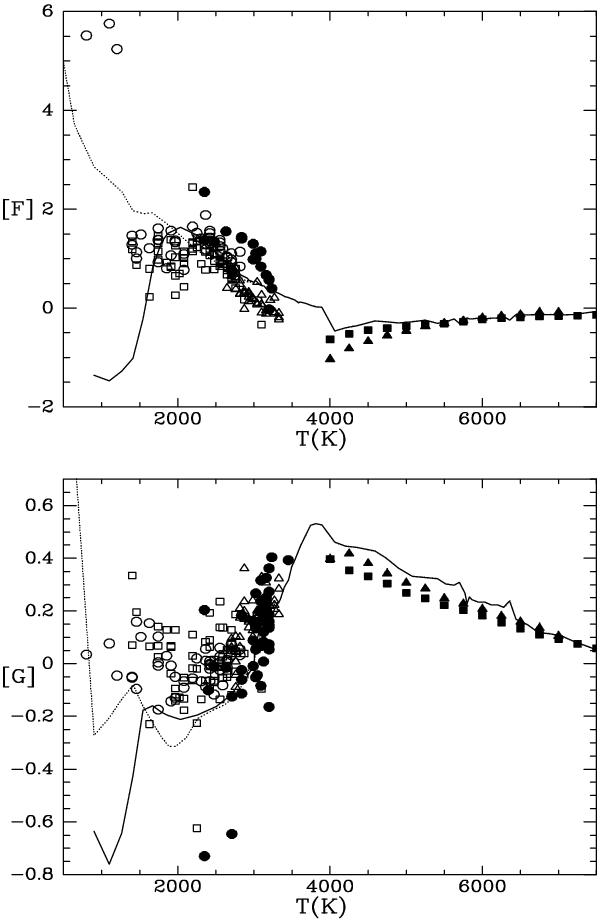Fig. 3

Expected behavior of the [F] and [G] reddening-free indices defined in Sect. 3 as a function of the stellar and substellar effective temperature. The solid line corresponds to the models of Chabrier et al. (2000) that include dust formation in the atmosphere, whereas the dotted line reproduces the models of Baraffe et al. (2003) in which dust species can sediment below the photosphere. The latter should represent the behavior of objects with Teff < 1400 K. The actual indices of cool objects with spectral classifications are plotted. Filled circles are confirmed members of the Chamaeleon I star-forming region from Luhman (2007), with magnitudes from that work except for members identified previous to Luhman’s study, for which the magnitudes are from Lawson et al. (1996). Also plotted are field cool dwarfs from Leggett et al. (2000) (open triangles), Dahn et al. (2002) (open circles), and Liebert & Gizis (2006) (open squares). For higher temperatures, the average colors of stars with solar metallicity (filled squares) and [Fe/H] = −2.5 (filled triangles) from Alonso et al. (1996) are given. Stars hotter than Teff > 3000 K have their [F] and [G] indices confined to a narrow permitted range well separated from the values reached by cooler objects.
Current usage metrics show cumulative count of Article Views (full-text article views including HTML views, PDF and ePub downloads, according to the available data) and Abstracts Views on Vision4Press platform.
Data correspond to usage on the plateform after 2015. The current usage metrics is available 48-96 hours after online publication and is updated daily on week days.
Initial download of the metrics may take a while.


